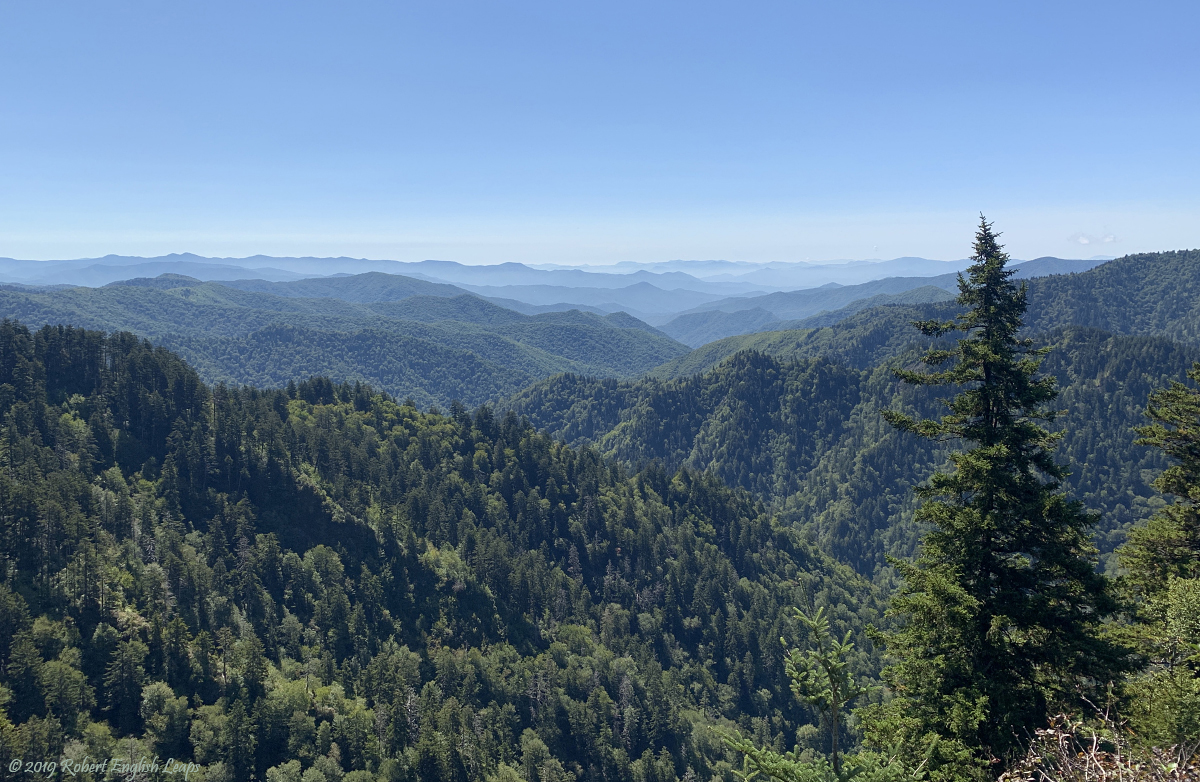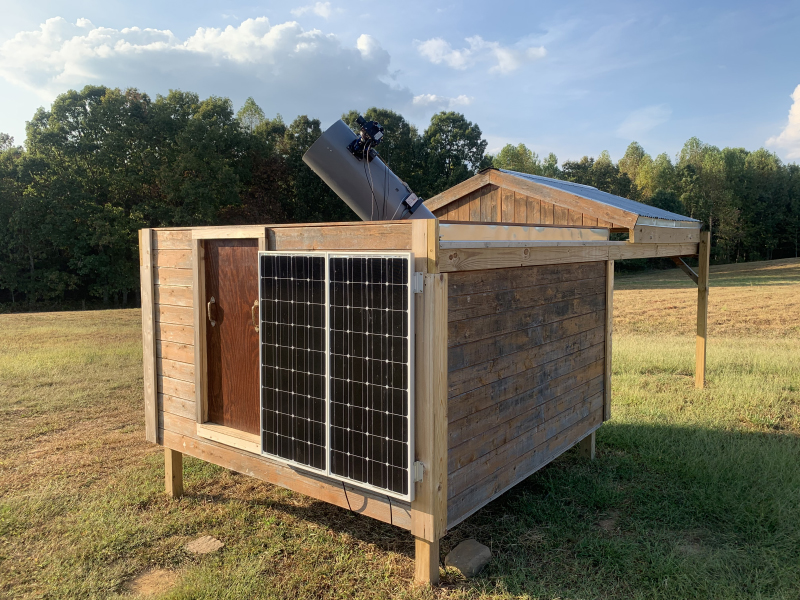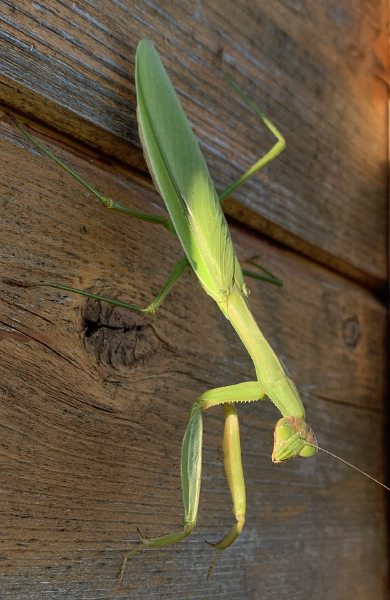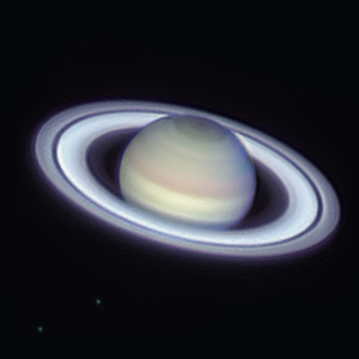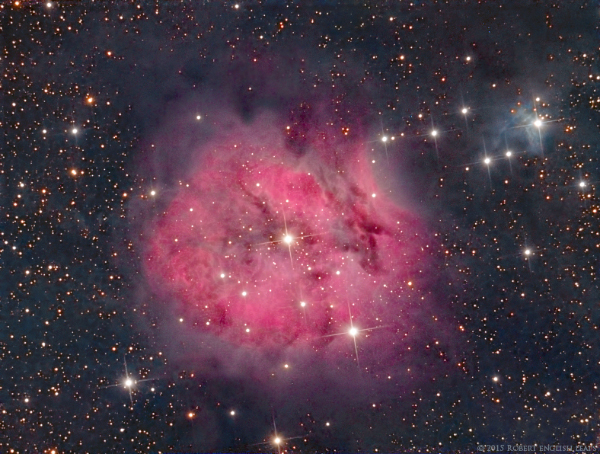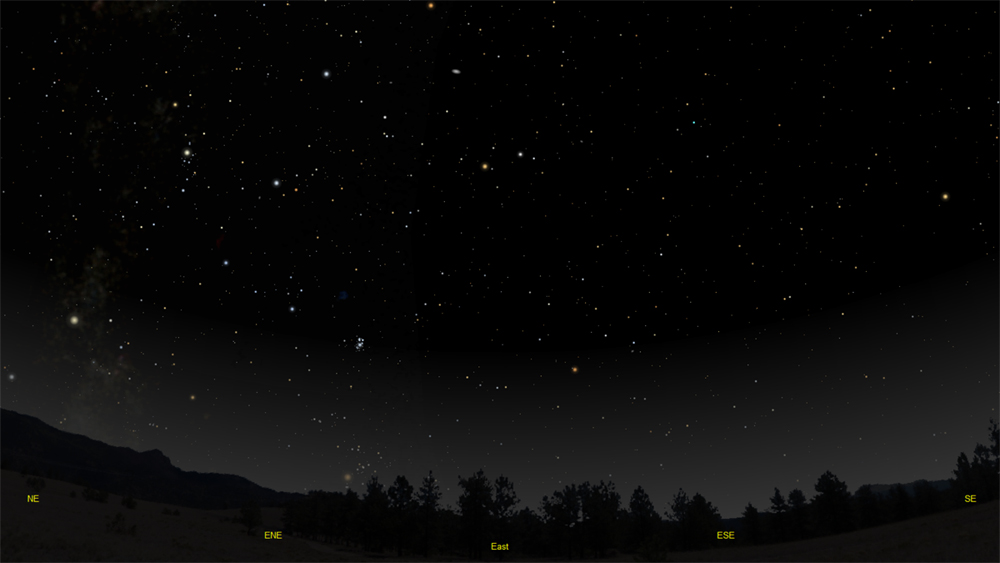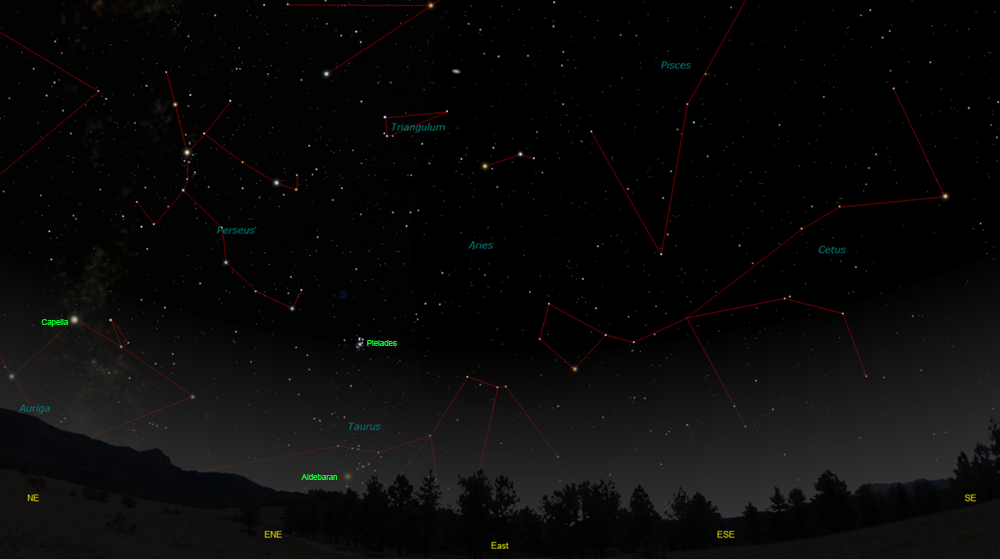The purpose of this feature is to give scout leaders, educators and naturalists an idea of some of the natural events coming up each month. We will try to cover a variety of natural events ranging from sky events to calling periods of amphibians, bird and mammal watching tips, prominent wildflowers and anything else that comes to mind. We will also note prominent constellations appearing over the eastern horizon at mid-evening each month for our area for those who would like to learn the constellations. If you have suggestions for other types of natural information you would like to see added to this calendar, let us know! Note: You can click on the hyperlinks to learn more about some of the featured items. To return to the Calendar, hit the "back" button on your browser, NOT the "back" button on the web page. All charts are available in a "printer friendly" mode, with black stars on a white background. Left clicking on each chart will take you to a printable black and white image. Though we link book references to nationwide sources, we encourage you to support your local book store whenever possible.
Notes From September 2019 On September 6th we did our longest hike to date in the Great Smoky Mountain National Park. We started at Newfound Gap and hiked the Appalachian Trail all the way to Laurel Top, then descended down through Peck's Corner to the Smokemont Campground. The total distance was a little less than 21 miles.
The weather was beautiful, with a cloudless blue sky and incredible visibility. The temperature never got out of the 60's for the duration of the hike. It took most of the day to complete the hike, but the views were worth it. We arrived at the campground tired but happy. It's been almost ten months since I began the reconstruction of my observatory here on Lookout Mountain. The scope is now ready for fully automated deep sky imaging and I can't wait to get started! The new observatory is "off the grid" and gets all of it's required energy from the Sun via the black solar panels in the image. It's a star machine that gets its energy from a star!
Sky Events for October 2019: The Orionid Meteor Shower peaks on the evening of the 21st and the morning of the 22nd.
Morning Sky: Look for Mars low in the eastern sky at dawn. It should become visible around the middle of the month. The red planet is in Virgo this month and will gradually climb higher as the month goes on. Evening Sky: You can still get good telescopic views of Jupiter and Saturn this month but you'll want to observe them as early in the evening as possible. That is when they are highest in the sky.After sunset, facing southwest, Jupiter will be the first starlike object that becomes visible. You can easily see the four Galilean moons of Jupiter in binoculars if you brace them against something steady. All four moons are not always visible since they are sometimes eclipsed by the planet or close enough to be lost in the glare of Jupiter. Once you spot Jupiter, look to its left. In a few minutes Saturn will be the next starlike object you'll see. Saturn will not be as bright as Jupiter, or appear as white. Saturn will be due south at dusk. In binoculars you won't be able to see the rings and globe as separate parts, but you'll see the noticably elliptical shape of the rings. The apparent diameter of the outside of Saturn's rings is about equal to the apparent diameter of Jupiter's globe. As an extra treat, if your night skies are relatively free from light pollution, you can see the Milky Way in between Jupiter and Saturn as the sky becomes fully dark. Saturn is dazzling in just about any size telescope, a tiny gem. This is a terrific time to see the rings at almost the maximum angle possible. Look for the dark Cassini's Division in the rings. Mercury and Venus are both very low in the western sky at dusk as the month begins. Due to its brightness, Venus will be the easier planet to spot. As the month goes on it will climb higher in the sky each evening.
The views below show the sky looking east at 10:30pm EDT on October 22nd. The first view shows the sky with the constellations outlined and labeled. Star and planet names are in green. Constellation names are in blue. The second view shows the same scene without labels. Prominent constellations include Triangulum, the Triangle, Aries, the Ram, and Cetus, the Sea Monster. Auriga, the Charioteer, with its bright star Capella, and Taurus, the Bull, are rising in the northeast. The bright star Aldebaran, a red giant representing the eye of the bull, should just be rising.Above Aldebaran, look for the Pleiades, a beautiful open star cluster. Also called the "Seven Sisters," it has been known since antiquity. In Japan it is known as Subaru, and the Subaru automobile is named for this cluster. Before the Gregorian calendar reform in 1582, the Pleiades culminated around midnight on October 31st, and it has been traditionally associated with Halloween.Clear moonless fall nights are a great time to hunt down deep sky objects in Cygnus. The constellation is just about directly overhead and objects like the Veil Nebula or the Cocoon Nebula are at their best. Don't expect to see the bright colors that long-exposure CCD images capture. Like Halloween ghosts, these objects hover at the limit of visibility in small telescopes.On Learning the Constellations: We advise learning a few constellations each month, and then following them through the seasons. Once you associate a particular constellation coming over the eastern horizon at a certain time of year, you may start thinking about it like an old friend, looking forward to its arrival each season. The stars in the evening scene above, for instance, will always be in the same place relative to the horizon at the same time and date each October. Of course, the planets do move slowly through the constellations, but with practice you will learn to identify them from their appearance. In particular, learn the brightest stars for they will guide you to the fainter stars. Once you can locate the more prominent constellations, you can "branch out" to other constellations around them. It may take you a little while to get a sense of scale, to translate what you see on the computer screen or what you see on the page of a book to what you see in the sky. Look for patterns, like the stars that make up the constellation of Perseus. The earth's rotation causes the constellations to appear to move across the sky just as the Sun and the Moon appear to do. If you go outside earlier than the time shown on the charts, the constellations will be lower to the eastern horizon. If you observe later, they will have climbed higher. To observe faint objects, it's always better to wait until they are high in the sky. As each season progresses, the earth's motion around the sun causes the constellations to appear a little farther towards the west each night for any given time of night. The westward motion of the constellations is equivalent to two hours per month. Recommended: Sky & Telescope's Pocket Star Atlas is beautiful, compact star atlas. A good book to learn the constellations is Patterns in the Sky, by Hewitt-White. You may also want to check out at H. A. Rey's classic, The Stars, A New Way to See Them. For sky watching tips, an inexpensive good guide is Secrets of Stargazing, by Becky Ramotowski.
A good general reference book on astronomy is the Peterson
Field Guide,
A Field Guide to the Stars and Planets, by Pasachoff. The book retails for around $14.00.
The Virtual Moon Atlas is a terrific way to learn the surface features of the Moon. And it's free software. You can download the Virtual Moon Atlas here. Apps: We really love the Sky Safari 6 Pro. It is available for both iOS and Android operating systems. There are three versions. The Pro is simply the best astronomy app we've ever seen. The description of the Pro version reads, "includes over 100 million stars, 3 million galaxies down to 18th magnitude, and 750,000 solar system objects; including every comet and asteroid ever discovered." A nother great app is the Photographer's Ephemeris. Great for finding sunrise, moonrise, sunset and moonset times and the precise place on the horizon that the event will occur. Invaluable not only for planning photographs, but also nice to plan an outing to watch the full moon rise. Available for both androids and iOS operating systems.
Amphibians:
Recommended: The Frogs and Toads of North America, Lang Elliott, Houghton Mifflin Co. Archives (Remember to use the back button on your browser, NOT the back button on the web page!) Natural Calendar September 2019 Natural Calendar February 2019 Natural Calendar December 2018 Natural Calendar November 2018 Natural Calendar February 2018 Natural Calendar December 2017 Natural Calendar November 2017 Natural Calendar October 2017Natural Calendar September 2017 Natural Calendar February 2017 Natural Calendar December 2016 Natural Calendar November 2016 Natural Calendar September 2016Natural Calendar February 2016 Natural Calendar December 2015 Natural Calendar November 2015 Natural Calendar September 2015 Natural Calendar November 2014 Natural Calendar September 2014 Natural Calendar September 2013 Natural Calendar December 2012 Natural Calendar November 2012 Natural Calendar September 2012 Natural Calendar February 2012 Natural Calendar December 2011 Natural Calendar November 2011 Natural Calendar September 2011 Natural Calendar December 2010 Natural Calendar November 2010 Natural Calendar September 2010 Natural Calendar February 2010 Natural Calendar December 2009 Natural Calendar November 2009 Natural Calendar September 2009 Natural Calendar February 2009 Natural Calendar December 2008 Natural Calendar November 2008 Natural Calendar September 2008 Natural Calendar February 2008 Natural Calendar December 2007 Natural Calendar November 2007 Natural Calendar September 2007 Natural Calendar February 2007 Natural Calendar December 2006 Natural Calendar November 2006 Natural Calendar September 2006 Natural Calendar February 2006
Natural Calendar December 2005
Natural Calendar November 2005
Natural Calendar September 2005
Natural Calendar February 2005
Natural Calendar December 2004
Natural Calendar November 2004
Natural Calendar September 2004
Natural Calendar February 2004
Natural Calendar December 2003
Natural Calendar November 2003 Natural Calendar February 2003 Natural Calendar December 2002 Natural Calendar November 2002 Nature Notes Archives: Nature Notes was a page we published in 2001 and 2002 containing our observations about everything from the northern lights display of November 2001 to frog and salamander egg masses. Night scenes prepared with The Sky Professional from Software Bisque All images and recordings © 2019 Leaps
|
|
